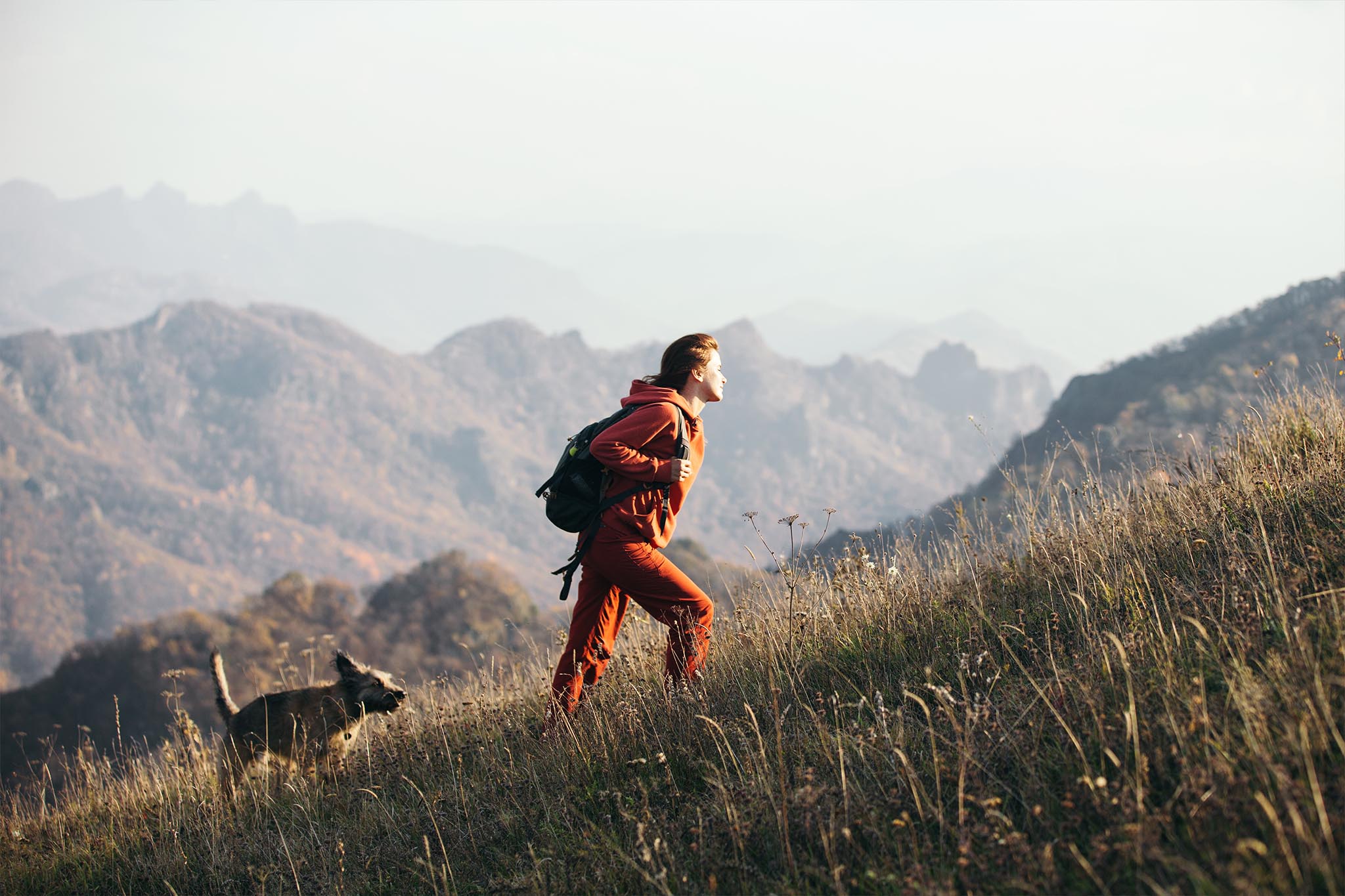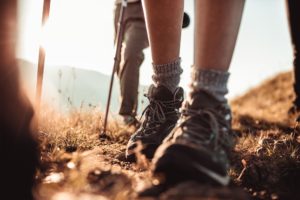Hiking is one of the best ways to experience nature and get a taste of the landscapes around you! Whether you’re planning a hike out to a specific destination or you simply are going for a hike to clear your mind and get some fresh air, there are many benefits! Movement is great for both your physical and mental health and getting out of your home and experiencing more of the world can offer you fresh perspectives and new inspiration, whether you’re exploring near or far.
Solo hiking is a great way to get out in nature and reconnect with yourself. Hiking alone can be a great confidence booster as you navigate the trails and terrain on your own. However, when it comes to hiking alone, you want to be sure you’re taking extra measures to stay safe! If anything unexpected happens, you won’t have a friend there to help you out. This is why you should not hike alone if you’re not generally comfortable hiking or have only been hiking once or twice. Your first few times hiking should be with a friend or a group of people. This way, you’ll get a little bit of experience, understand how far you’re comfortable going, and get a feel for the environment, without going it alone!
If you have some experience and are feeling confident about hiking alone, here are a few things you should do before you head out and keep in mind while you’re on the trail!
Gear Up to Hike Alone
It’s important to be sure you have all the right equipment before you hit the trails alone! What you pack may depend on where you’re planning on venturing and how long you’re planning on being out. If your hike is one where you plan on doing some camping, you’ll definitely want to bring more gear along than if you simply plan on being out for a few hours. You’ll also want to keep weather in mind so that you can dress appropriately without getting too chilled or overheated.
Necessities for hiking alone:
Hiking Backpack
These are designed to be lightweight, durable, weather-proof, and ready for all of your adventures! They’re great for storing all of your other gear, so this is something you’ll want to be sure you have while you’re out alone.
Hiking Shoes
You don’t just want to wear any old shoes out on your hike. Hiking-specific shoes have plenty of grip and many of them are also waterproof to keep your feet comfortable and protected from the elements. Remember, though, to break in your shoes before hitting the trails to avoid blisters or any discomfort.
Proper Clothing
Staying comfortable can make or break your solo hike. Be sure you are wearing something that is breathable but also protected from exposure to sun, rain, snow, or whatever other weather conditions you may encounter.
Water Bottle and Snacks
You’ll want to stay hydrated and keep your energy up while you’re alone on the trail! Make sure your water bottle is full and you’re stocked with plenty of snacks before you head out. Check out this post for some great trail snack ideas or if you eat gluten free, there are plenty of resources online.
First Aid Kit
It’s always a good idea to bring a First Aid Kit along on your hike but even more so when you’re hiking alone! Make sure it’s stocked with bandages, antibiotic ointment, tweezers, and more.
Other
Bringing along other tools in case of emergency is also a good idea when hiking alone. A pocketknife, matches, flashlight, and compass are a few great items to have on hand! Plus, it’s always a good idea to bring along a map of the route you’ll be hiking! If you plan on using your phone a lot, a portable battery pack can also come in handy.
Research and Plan for a Solo Hike
Maybe you’re the type of person who doesn’t like to plan. Perhaps you enjoy being spontaneous and seeing where the trail takes you. This is fine to do if you’re with friends, but it’s definitely not the safest idea when you’re hiking alone! You want to have a plan and stick to it when you’re going solo. Start by doing some research on the area and route that you plan to hike. Take note of any potential dangers you may run into, such as wildlife or poisonous plants, that you will want to be aware of or avoid if possible. Also be sure to check if the trail has any spots where you will have access to clean drinking water so that you can refill your water bottle when you need to.
Check the Forecast
Weather can be unpredictable, so you’ll want to check the forecast shortly before heading out alone to see if any rain or storms have popped up. If it looks like bad weather is on the way, you may want to postpone your hike for another day. If the weather looks mostly nice with a slight chance of rain or dropping temps, it’s best to be on the safe side and bring along a rain jacket, hoodie, or something to keep you dry and warm.
Tell a Friend
Before you head out, be sure at least one friend (or more) will know where you’ll be and the timeframe, you’ll plan on being out. That way, at least one person will know where you are in case any emergencies arise. If you’ve mapped out an itinerary for yourself and are planning to make any stops along your solo hike, share this information with your friends as well.
Don’t Take Risks
While you’re out hiking alone, it may be tempting to deviate from your original plan and explore places off the beaten path. But as previously mentioned, it’s safest to stick to your original plan when hiking alone so that your friends know where you are, and you won’t run the risk of encountering any unexpected dangers. It’s also a good idea to not push yourself beyond your limits. Maybe you were planning on hiking a certain distance or to a certain point, but you’re starting to feel fatigued halfway through. In these situations, you should always stay on the safe side and turn around instead of forcing yourself to go farther than you can handle.
Where should I hike alone?
When it comes to hiking alone, especially if it’s your first time solo, it’s a good idea to go somewhere fairly popular. This way, you’ll be on a trail that has been more widely explored, and through a bit of research, you can know what to expect. You may also have a better chance of running into other hikers, which could be helpful in case something goes wrong. National parks or state parks are some great places to start with when hiking alone! Do a little researching to find what parks are close to you and where some popular trails are in your area.
Stay safe while hiking alone by following these guidelines! That way, you’ll be able to avoid any potential threats that could ruin your solo adventure in the great outdoors!








